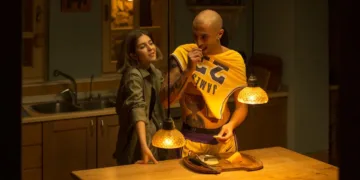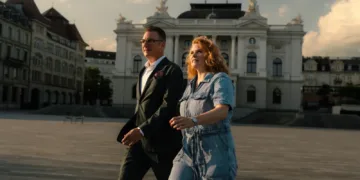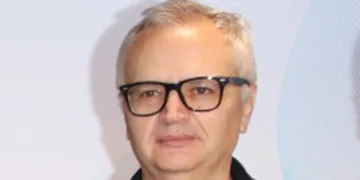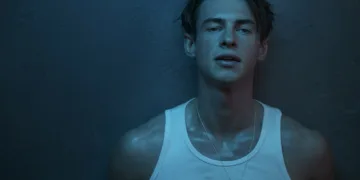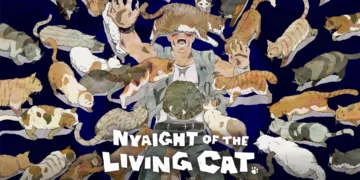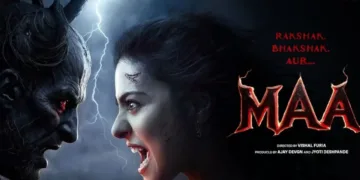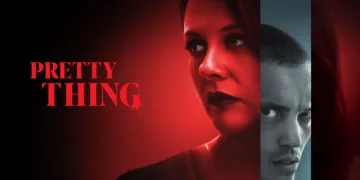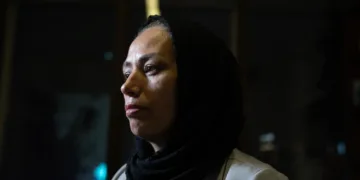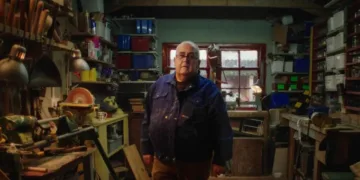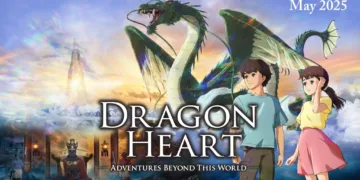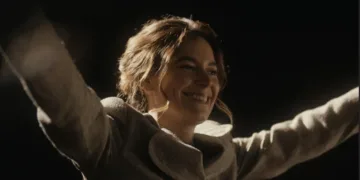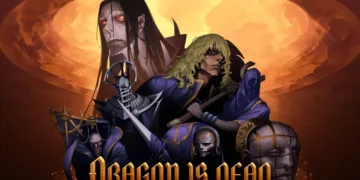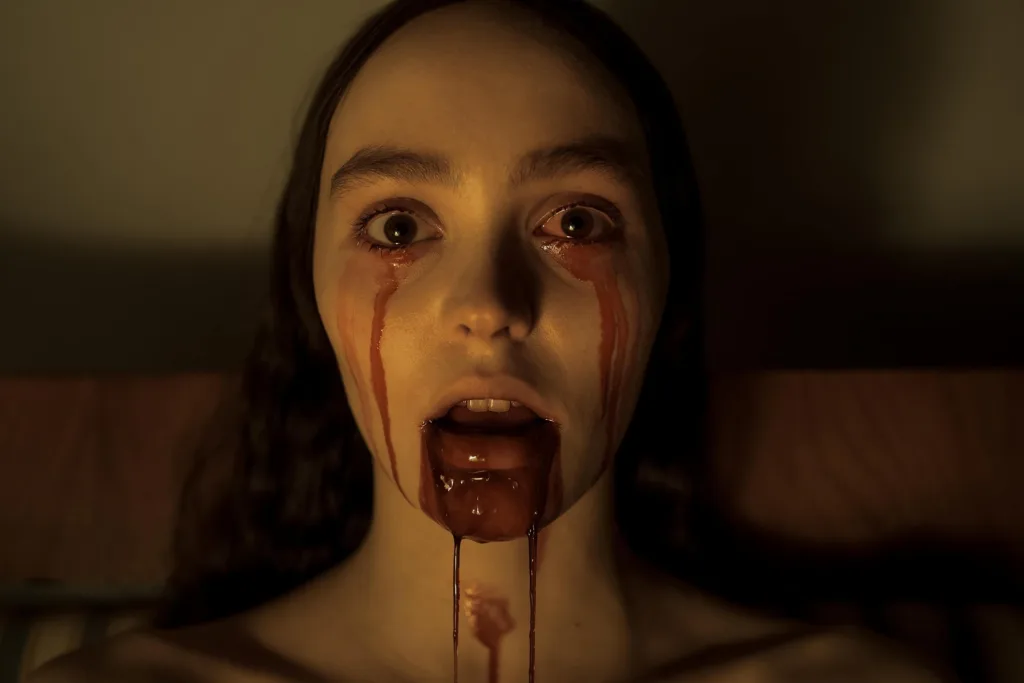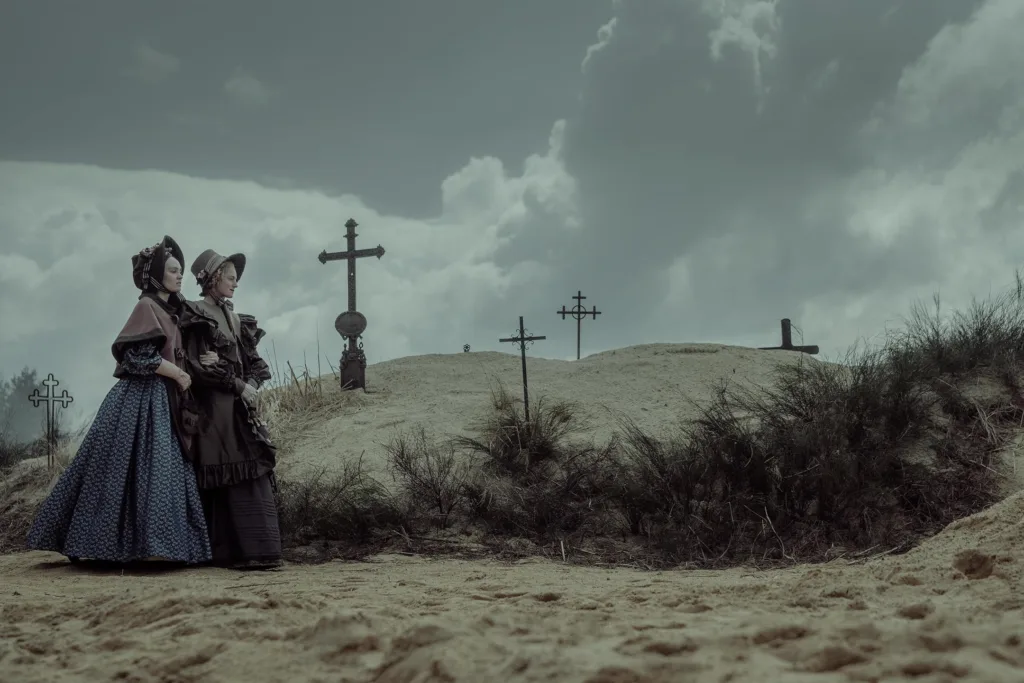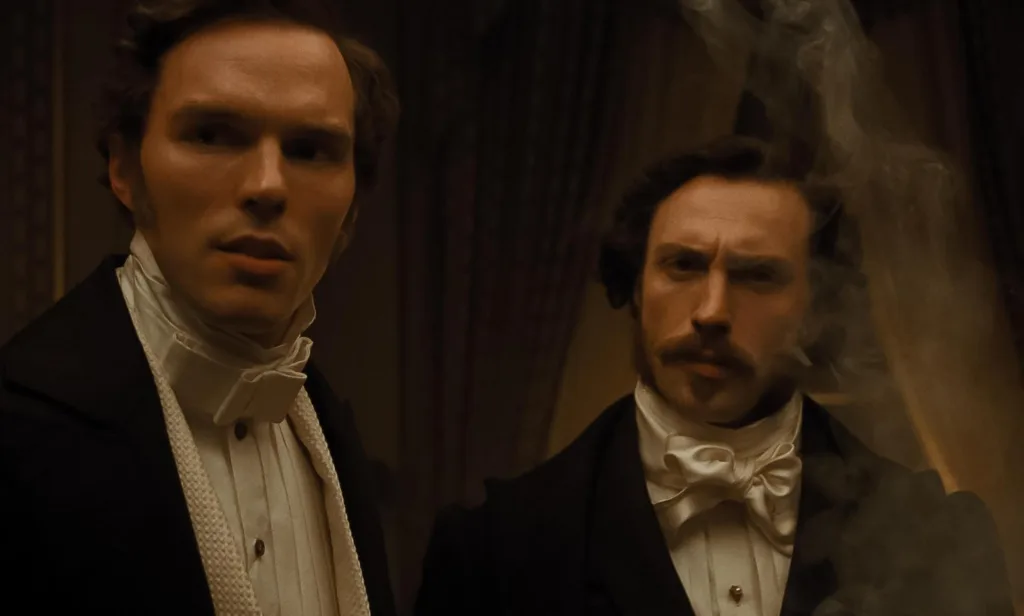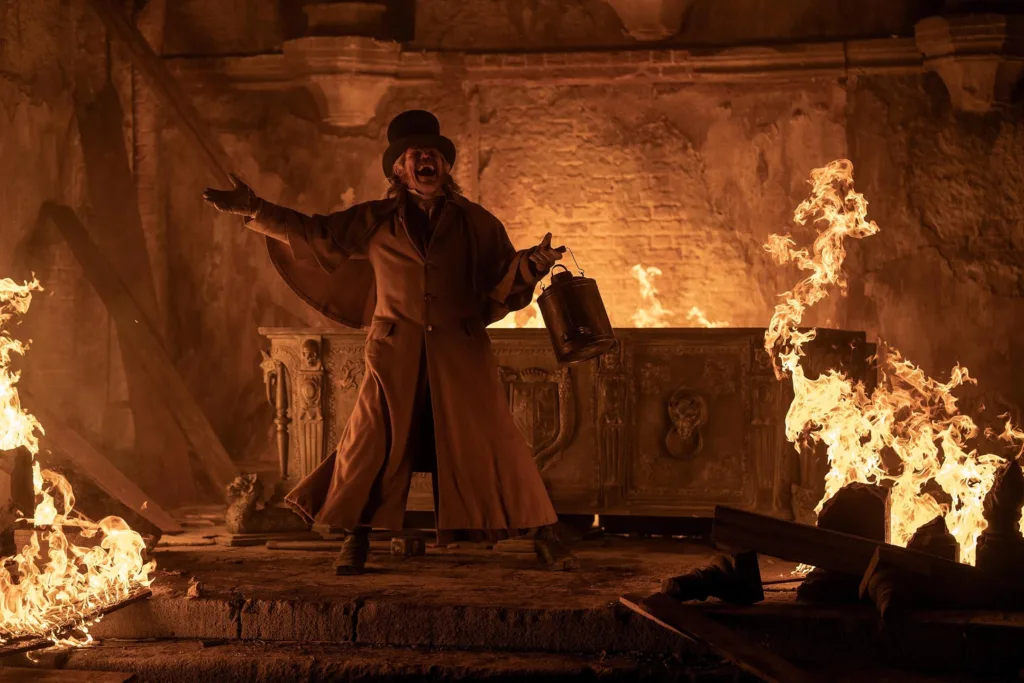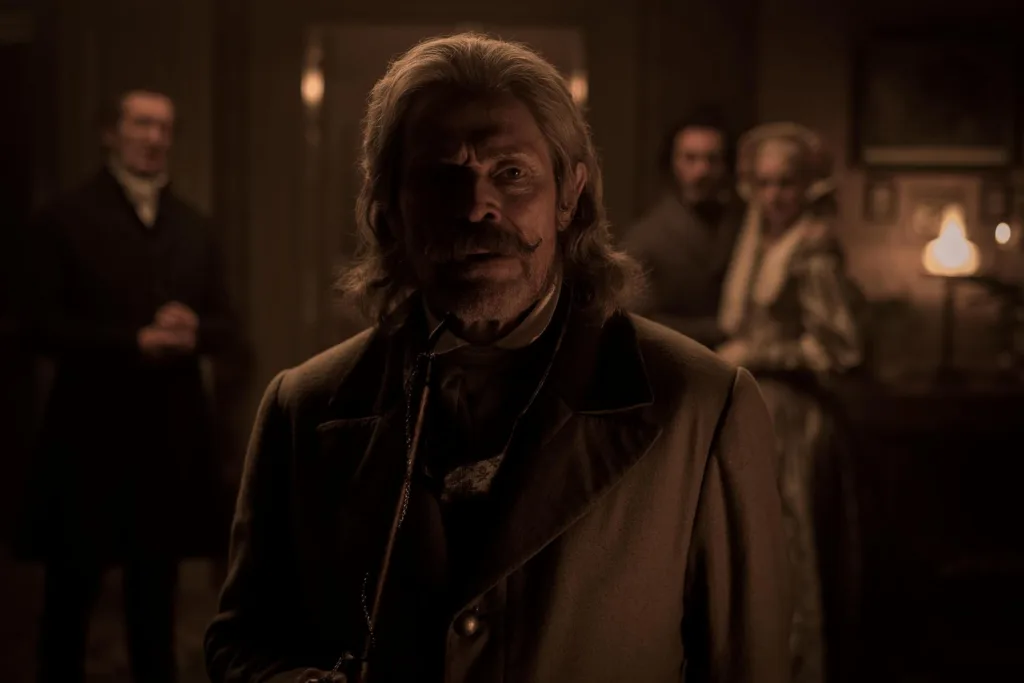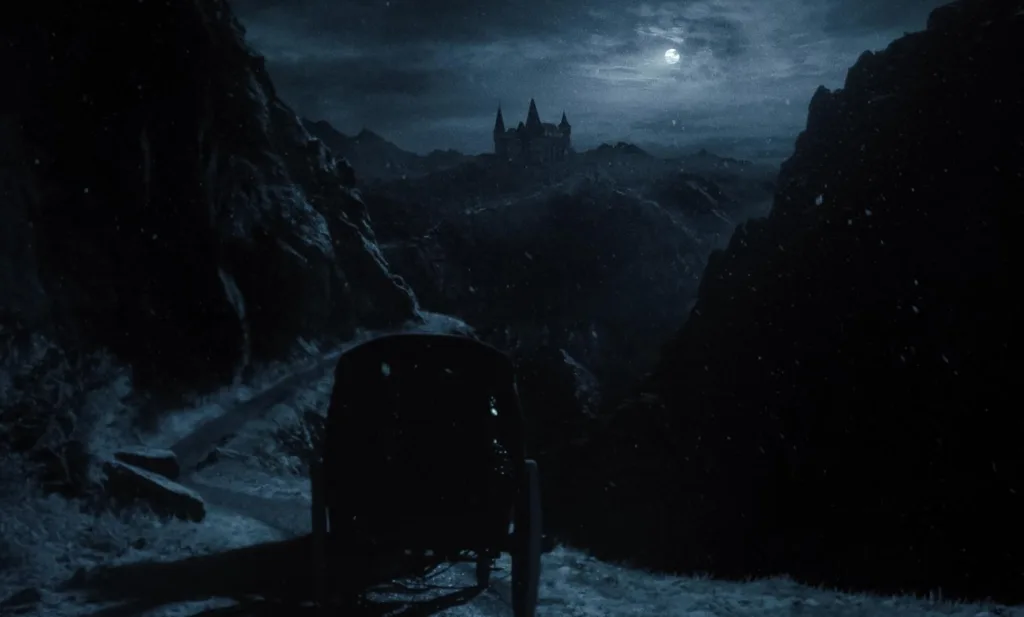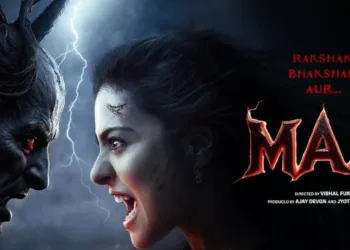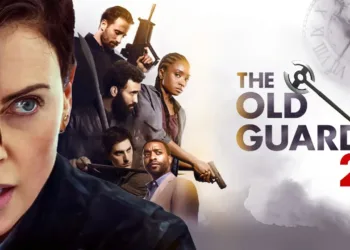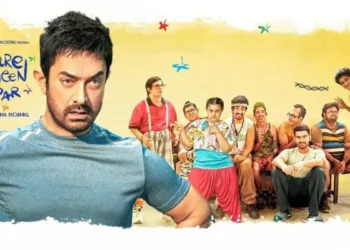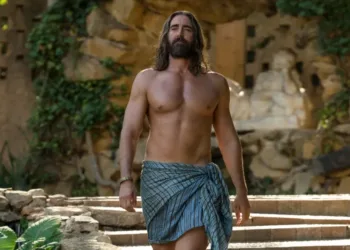In a physical and figurative sense, vampires just refuse to die. Their fame goes beyond the pages of Bram Stoker’s Dracula and the movies of F.W. The seductive allure and existential dread of Murnau’s Nosferatu have haunted generations.
Nosferatu by Robert Eggers brings this myth to life with a bold, atmospheric remake of the silent 1922 classic. The story takes place in Germany in 1838, a time on the edge of modernity but still full of superstitions.
Count Orlok (Bill Skarsgrd), a horrifying vampire who looks like a corpse, drives the narrative. Eggers turns the gothic archetype into a psychological study of repression, desire, and decay. This is more than just a retelling of a well-known story. Ellen, frequently portrayed as a passive figure in adaptations, develops into a fully developed character—a woman caught between social norms and her dark desires.
While his visual and thematic flourishes give the gothic horror tradition new life, Eggers’ trademark dedication to historical accuracy (seen in The Witch and The Lighthouse) imbues Nosferatu with a tangible reality.
A meditation on humanity’s endless dance with death and corruption, the result is a deeply unsettling and strangely beautiful film. What makes us want to be in such darkness? Eggers doesn’t just ask the question in Nosferatu; he lets us be consumed by it.
A Cinematic Séance: Eggers’ Craftsmanship in Reviving Nosferatu
Robert Eggers isn’t a filmmaker; he goes back in time. With Nosferatu, he pulls us back into a world that feels like it was taken from the deepest parts of history, even though we don’t want to be there. His reputation for doing a lot of study and paying almost too much attention to detail (imagine whole libraries shaking at the thought of his next project) is perfect for this.
Eggers imbues a period with life, death, and everything in between, including the cobblestone streets of 1838 Germany, the flickering lights in decaying castles, and the oppressive weight of superstition.
But Nosferatu is more than just a medieval costume play. Eggers infuses every frame with a dark, oppressive atmosphere by using realism as a cover for dread. His gothic style, characterized by shadows, decay, and occasionally unnervingly long pauses, feels ancient and contemporary. This film director knows that horror doesn’t always come from what you see immediately but from what seeps in slowly, like damp rot in Orlok’s castle walls.
Nosferatu has some dramatic moments, but the tone is mostly dark. Eggers finds a way to balance the crushing weight of gothic horror with an almost theatrical grandeur. Orlok isn’t just a monster; he’s an event, a natural force that changes things. The slow pacing allows the audience to sink into or drown in the film’s world, even by Eggers’ standards.
However, Eggers stands out because of his ability to be new while still paying respect. Undoubtedly, his Nosferatu owes a lot to F.W. Not only is Murnau’s silent classic original, but it also has a lot of shadows and bizarre villains.
Eggers gives the film a modern sensibility to obsession, repression, and the inevitableness of decay while deepening the narrative with psychological complexity, especially in Ellen’s expanded role. It’s a resurrection, yes, but it’s also a change. It’s like a movie séance that brings the spirit of gothic horror to life and gives it new flesh to inhabit.
The Eternal Dance: Storytelling in Nosferatu’s Shadow
Nosferatu is a gothic story about a naive man, a terrifying predator, and a lady caught in their destructive orbit. At first glance, the plot feels familiar, almost archetypal. But beneath its simplicity is a narrative that has been carefully re-engineered and thrives on psychological depth and thematic variety.
The story is about Count Orlok’s (Bill Skarsgård) relentless chase of Ellen Hutter (Lily-Rose Depp). His pursuit starts with Thomas Hutter (Nicholas Hoult), a bad real estate agent who gives Orlok his wife without meaning. The story’s soul, however, is Ellen, whose psychological and emotional problems take center stage while Thomas serves as its trigger.
Orlok represents a force of corruption that seeps into every corner of the narrative, and his predatory nature is not just limited to bloodlust. His obsession with Ellen feels more like an existential hunger than a romantic longing—a need to destroy and consume what he cannot have.
That being said, Ellen is not just a victim. She is reframed by Eggers as a figure of agency, even though she is struggling with her dark wants. What could have been a simple story of good versus evil becomes much more complicated and unsettling due to the tension between Ellen’s independence and Orlok’s relentless chase.
Eggers makes changes that aren’t obvious but are still important. A shadowy, almost mystical link between Ellen and Orlok is established in the opening, suggesting forces beyond the physical. Not only does this add to Ellen’s character, but it also sets the stage for the film to explore repression and forbidden desire.
While this is happening, Willem Dafoe’s Von Franz, a charmingly strange occult scholar, adds a layer of academic intrigue by providing Orlok with cryptic clues about his personality and acting as a counterpoint to the emotional chaos he is experiencing.
The pace of Nosferatu is like a slow, unavoidable fall into darkness. The structure starts with Thomas’ trip to Transylvania, continues with Orlok’s arrival in Wisborg, and ends with the main encounter, allowing the dread to develop gradually, like a shadow moving across a wall. Some viewers may find the slow pace hard to handle, but this careful pace makes the story so suffocating. Each scene lingers, and each moment lingers until the audience, like the characters, is left gasping for air.
Desire, Decay, and the Death Drive: The Themes of Nosferatu
Robert Eggers’ novel Nosferatu transports us to a world where the boundaries between desire and destruction are hazy, and repression is its kind of haunting. The film’s beating heart, Ellen Hutter (Lily-Rose Depp), is caught in a tense struggle between her love for and fear of Count Orlok.
Orlok’s predatory obsession with Ellen embodies a kind of dark magnetism despite his grotesque frame and cadaverous visage, making him no seductive vampire in the style of Dracula. He is more of a force than a man. He personifies humanity’s deepest, darkest, and most forbidden urges.
Ellen is having a hard time both inside and outside of herself. Her dreams and strange links to Orlok show that she is deeply uncomfortable with her desires, which society has taught her to hide. So, Orlok turns into a psychosexual horror figure, a man who represents what is going on beneath the polite surface of bourgeois society. Ellen’s character arc revolves around this conflict between death, desire, and freedom. She is not just a victim; she is a woman who is scared to think that her freedom might cost her soul.
Orlok is a sign of social decay, corruption, and individual psychology. When he gets to Wisborg, he spreads disease and chaos like a virus that can’t be stopped. It’s hard to ignore the similarities to past pandemics, like the bubonic plague in the Middle Ages or even the COVID-19 pandemic. With Orlok’s grotesque presence highlighting civilization’s fragility, this is horror as a metaphor. The polite order of Wisborg is shown to be a thin, fragile shell that forces beyond human control can break.
At the same time, Ellen’s story looks at freedom and power in a very gendered setting. Ellen’s biggest battle is to take back control of her life in a society that wants to limit her to the roles of good wife and passive object of desire. To regain control of her body and mind from the forces that want to rule her, her fight against Orlok is more than just a physical one.
Even her husband Thomas (Nicholas Hoult), who means well but can’t help her, shows this theme of helplessness when he gets caught in Orlok’s web. In contrast, Willem Dafoe’s Von Franz serves as a counterpoint as a figure of intellectual control, attempting to solve the Orlok puzzle through knowledge rather than fear.
When Eggers writes Nosferatu, it is more than just a gothic horror story. It’s a meditation on the endless tension between fear and freedom, desire and decay. These ideas stick around long after the shadows disappear, just like Orlok himself.
Specters in Flesh: Characterization and Performances in Nosferatu
Ellen Hutter is at the heart of Robert Eggers’ Nosferatu, who Lily-Rose Depp plays with terrifying passion. Ellen is not at all like the typical passive gothic lady in distress. She is the emotional and thematic center of the film, representing a clash of vulnerability, desire, and defiance. In Depp’s performance, her moves are so physical that they are shocking.
They go from slow and fast, like a marionette caught in a storm. The portrayal feels timeless and real as Ellen goes from being a victim of Orlok’s obsession to a player in the narrative’s grim ending. She is not just a figure of sympathy but also power due to her internal conflict, which is torn between social expectations and her dark yearnings. Her frightened and defiant gaze lingers on Orlok for a moment, as if she were staring into the abyss and daring it to blink first.
Then there is Orlok himself, who Bill Skarsgrd plays in an unnerving and captivating performance. The amazing prosthetic work in the film and Skarsgrd’s dedication are both on full display in his change into the dead Count. Skarsgrd’s Orlok is a living corpse with taut skin, hollow cheeks, and messy whiskers—a ghoul who appears to have been exhumed rather than invented—unlike Max Schreck’s more rat-like, almost cartoonish Orlok from Murnau’s original.
But beneath his terrifying exterior is a sad vulnerability. Orlok becomes less of a bad guy and more of a force of nature, reflecting humanity’s darkest urges, thanks to Skarsgrd’s guttural, almost sad voice, which imbues him with a strange, paradoxical humanity.
By contrast, Nicholas Hoult’s Thomas Hutter is a tragically innocent figure. At first, Thomas is excited and wide-eyed. Still, he is quickly drawn into Orlok’s circle, and his optimism turns into anxiety and a sense of helplessness. Hoult portrays him with a kind of amiable clumsiness that serves as a source of humor and contrasts with Ellen and Orlok’s more primal battles. Thomas feels like an outsider, a man who is—at best—incidental to the horror around him. At the same time, Ellen and Orlok share an almost meta-horror connection.
Aside from the main characters, the supporting group gives Wisborg more depth. Professor Von Franz, played by Willem Dafoe, stands out. His strange behavior and cryptic statements add a dark comedy to the events.
Simon McBurney’s Herr Knock, a devoted follower of Orlok, epitomizes the themes of corruption and decay in the film, with his unhinged performance teetering between madness and threat. The vulnerability of Wisborg’s posh society in the face of Orlok’s chaos is highlighted by Ralph Ineson’s Dr. Sievers and Aaron Taylor-Johnson’s Friedrich Harding, who are less memorable but still serve as grounding figures.
Together, these performances make a world full of dread, desire, and decay, where every character, no matter how small their part, feels like a broken piece of a bigger mosaic.
The Art of Shadows: Visual and Technical Brilliance in Nosferatu
Few directors today are as skilled with light and shadow as Robert Eggers. Nosferatu may be his most striking visual work to date. Jarin Blaschke, a cinematographer who has worked with Eggers for a long time, creates a gothic dream world where darkness feels alive, and light seems to shake in its presence.
The film’s color scheme, mostly dull grays, and sickly yellows makes the world look half-decayed like it’s already giving in to Orlok’s influence before he even gets there. Each frame is its composition, and they often remind me of Romantic art (think Caspar David Friedrich through a fever dream). As night falls, a single candle stands weakly against the darkness, creating flickering shadows that seem to have their evil will.
This sense of contrast is used a lot in the production design. With its clean cobblestone streets and fancy interiors, Wisborg feels like a society that is desperately trying to keep up the appearance of order. Orlok’s castle stands out against this backdrop like a dead body of society, its crumbling walls and huge halls as a stark reminder of how transient humanity is.
It’s amazing how much attention to detail was put into this, from the worn-out fabrics on Ellen’s clothes to the grime covering Orlok’s home. Even small things, like the chipped paint on a window frame, feel like they were put there on purpose, which adds to the film’s themes of decay and corruption.
Then there’s Orlok himself. How Bill Skarsgård changes into the vampire count is nothing less than disgusting art. His skeletal frame, sunken eyes, and cracked skin give him the appearance of death, personified as if he were exhumed from the ground rather than being born in a makeup chair. Many of the effects here are real, and only a few minor digital tweaks are used to make the supernatural seem stronger.
The result is a monster you can touch that feels incredibly real. Eggers does the right thing by not using too much CGI in the film. Instead, he uses real-life scares like creaky doors, flickering lights, and moving shadows. The spooky result serves as a reminder that sometimes, the simplest methods can produce the scariest outcomes.
Nosferatu serves a purpose with each visual choice. It’s more than just a treat for the eyes; it’s a journey into the soul, where beauty and rot live together in a fragile, nightmare-like balance.
The Dread That Lingers: Horror and Atmosphere in Nosferatu
The best horror isn’t just about what you see; it’s also about how you feel. Robert Eggers creates a slow, creeping dread in Nosferatu that seeps into every corner of the film with masterful precision. This is not the kind of movie that jolts you with quick shocks, though some moments are meant to do that.
Instead, it surrounds you with a heavy atmosphere that feels almost alive. Shadows stretch in ways that don’t make sense; quiet gets unbearable, and the spaces between moments pulse with a strange energy. Eggers plays with this tension to great effect because he knows that the anticipation of horror can be more unnerving than the horror itself.
In Nosferatu, the scares are both about what they show and what they imply. For example, Orlok’s shadowy looks mean he is often felt more than seen. He is a flicker of movement in the corner of the frame or a looming silhouette that seems to breathe.
The ship scene is one of the best parts of the movie. It’s a great example of claustrophobic horror, with Orlok’s presence turning the creaky ship into a floating tomb. These moments are more about building a thick atmosphere that feels suffocating than gore (Eggers wisely avoids excess).
But Nosferatu’s real horror comes from how it makes you feel. When Orlok shows up, he’s not a character but more of a natural force—a living memorial to death. The film disturbs rather than just unsettles the audience, making them face their fears of mortality and corruption. By the time the credits roll, the sense that Orlok was always there, waiting in the shadows, lingers in the mind rather than just Orlok.
Resurrecting the Undying: Nosferatu’s Place in Horror History
Nosferatu by Robert Eggers isn’t just a remake; it’s a film séance that brings the ghosts of gothic horror to life and gives the genre new life. The film’s best quality is how well it combines a strong sense of dread with careful historical accuracy.
Even the dark photography by Jarin Blaschke and the grotesque physicality of Bill Skarsgård as Orlok, as well as Lily-Rose Depp’s raw, haunting performance, all work together to create a vision that feels both timeless and unsettlingly modern. Eggers does more than just honor F.W. The 1922 classic by Murnau; he reinterprets it, making it more psychologically and thematically complicated while keeping its creepy, otherworldly feel.
It is impossible to overstate the film’s influence on the horror genre. Nosferatu is a reminder of what horror can do when it dares to be patient, cerebral, and deeply atmospheric in an age dominated by jump scares and formulaic storytelling.
It takes the vampire story from its more commercialized versions (no sparkling here). It brings it back to its folkloric roots, where it is raw, primal, and full of existential fear. Much like Murnau’s original, Eggers’ Nosferatu will leave its shadow on the genre, a subtle but enduring impact that will encourage filmmakers to prioritize mood and meaning over spectacle.
Eggers has ultimately crafted a horror film that goes beyond its genre. A meditation on death, desire, and the fragility of society, Nosferatu is more than just a story about a vampire stalking the living. Long after it’s over, it lingers in the mind like a whisper: haunting, unavoidable, and timeless.
The Review
Nosferatu
Nosferatu is a masterful mix of gothic horror and psychological depth, resurrecting the vampire mythos with a bold, unsettling vision. Robert Eggers. The film surpasses its remake status by becoming a meditation on decay, desire, and man thanks to its careful period detail, oppressive atmosphere, and haunting performances, especially Lily-Rose Depp's fierce Ellen and Bill Skarsgrd's creepy Orlok. It reclaims horror as an art form by eschewing cheap thrills in favor of intense dread. Eggers has crafted a timeless ode to the genre's roots while pushing its boundaries.
PROS
- Meticulously crafted gothic atmosphere with stunning visuals.
- Lily-Rose Depp’s intense, layered performance as Ellen.
- Bill Skarsgård’s grotesquely compelling portrayal of Count Orlok.
- Jarin Blaschke’s masterful use of light and shadow.
- Thoughtful themes exploring repression, mortality, and decay.
- Faithful homage to the 1922 original with modern psychological depth.
- Avoids over-reliance on jump scares, favoring mood and tension.
CONS
- Deliberate pacing may feel slow for some viewers.
- Emotionally heavy tone lacks moments of levity.
- Supporting characters, while serviceable, can feel underdeveloped.
- Not a conventional horror film, which might polarize audiences.
















